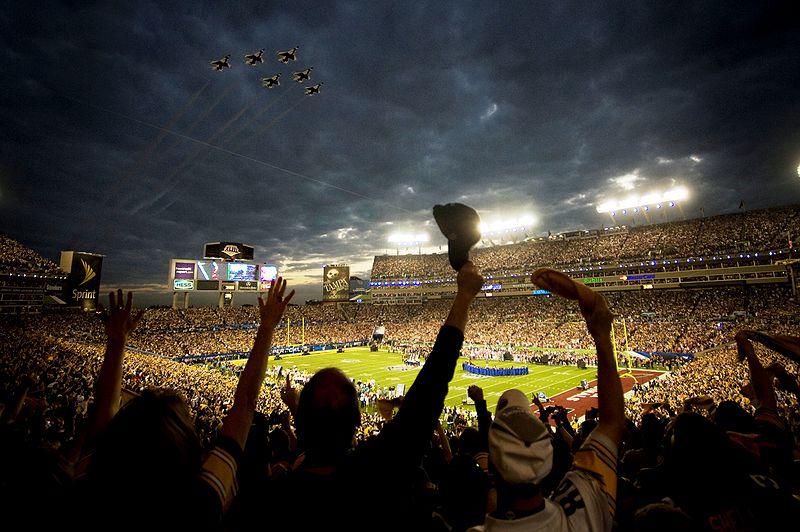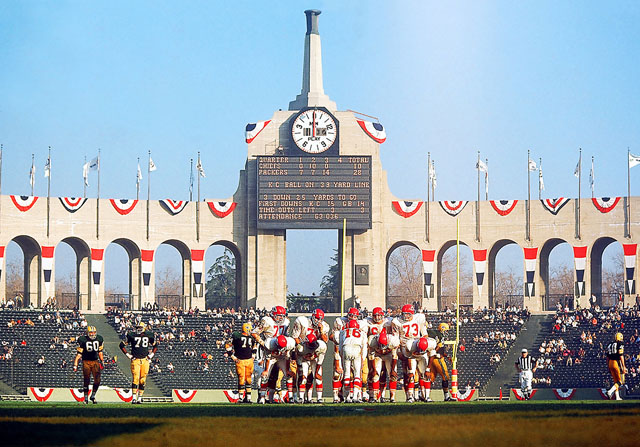How America Became the Super Bowl Center Point

The Origins of the Super Bowl
The Super Bowl was born out of the merger between the National Football League (NFL) and the American Football League (AFL) in the 1960s. Prior to this, each league had its own championship game. The idea for a combined championship game was proposed by AFL founder Lamar Hunt and NFL Commissioner Pete Rozelle.
The First Super Bowl
The inaugural Super Bowl took place on January 15, 1967, at the Los Angeles Memorial Coliseum. The Green Bay Packers, coached by Vince Lombardi, defeated the Kansas City Chiefs 35-10. Despite its significance, the game drew modest television ratings, reflecting its nascent status as a major sporting event (NFL Official Website).
Early Growth
Throughout the late 1960s and 1970s, the Super Bowl began to establish itself as a premier event in American sports. Initially, the game was broadcast in a relatively straightforward manner, but the increasing popularity of football and the NFL’s expanding reach began to elevate the Super Bowl’s profile (Hensley, 2017).
The Super Bowl’s Rise to Prominence
The Super Bowl’s ascent to prominence can be attributed to several key factors: increased media coverage, the evolution of the halftime show, and the commercialization of the event.
Media and Television
Television played a crucial role in the Super Bowl’s rise. The game’s broadcasts evolved from modest local coverage to nationally televised events with extensive pre-game and post-game analysis. By the 1980s, the Super Bowl had become a major television event, attracting millions of viewers and setting the stage for its future success (Ad Age).
The Halftime Show
The halftime show, once a simple performance by college marching bands, evolved into a major entertainment segment. In 1977, the show began to feature more elaborate productions, and by the 1980s, major musical acts such as Michael Jackson and Prince performed during the halftime break. This transformation turned the halftime show into a significant draw for viewers beyond just football fans (Sporting News).
Commercialization
The Super Bowl’s commercialization marked another pivotal change. The event became a prime opportunity for advertisers to showcase their most innovative and memorable commercials. The cost of a 30-second commercial spot skyrocketed, reflecting the game’s high viewership and significant advertising value. The Super Bowl’s commercials became an integral part of the event, often generating as much discussion as the game itself (Forbes).
Cultural Impact and Economic Influence
The Super Bowl’s cultural and economic impact extends far beyond the game itself. It influences American culture, drives economic activity, and shapes local communities.
Cultural Significance
The Super Bowl has become a cultural touchstone in American life. It is not just a sporting event but a major social occasion, marked by parties, gatherings, and elaborate celebrations. The game’s commercials and halftime show often reflect and influence contemporary cultural trends (The Atlantic).
Economic Impact
The Super Bowl generates substantial economic activity. Host cities experience a surge in tourism, local business revenue, and national attention. According to a 2020 report, hosting the Super Bowl can inject hundreds of millions of dollars into a local economy, benefiting hotels, restaurants, and retail businesses (New York Times).
Local Community Benefits
Beyond immediate economic benefits, the Super Bowl often leads to long-term improvements in infrastructure and community visibility. Cities that host the event gain exposure on a global stage, which can translate into increased tourism and business opportunities (Forbes).

The Super Bowl’s Global Reach
While the Super Bowl is deeply rooted in American culture, its influence has expanded globally. The game attracts an international audience and has become a symbol of American sports and entertainment.
International Broadcasts
The Super Bowl is broadcast to millions of viewers around the world. International broadcasters secure rights to air the game in various countries, reflecting the growing global interest in American football. This international reach highlights the Super Bowl’s status as a global event (BBC Sport).
Global Appeal
The game’s global appeal extends beyond just viewership. The Super Bowl’s commercials, halftime performances, and overall spectacle resonate with audiences worldwide. This international interest demonstrates the Super Bowl’s role as a cultural ambassador for American entertainment (The Guardian).
The Future of the Super Bowl
Looking ahead, the Super Bowl’s future will be shaped by various factors, including technological advancements, evolving viewer preferences, and global trends.
Technological Innovations
Technological advancements are poised to transform the Super Bowl experience. Innovations in broadcasting, streaming, and interactive media could enhance how fans engage with the game. Virtual reality and augmented reality technologies may offer new ways to experience the event (TechCrunch).
Changing Viewer Preferences
As audience preferences evolve, the Super Bowl will need to adapt to new trends. Younger generations may influence how the game is presented and marketed. The event’s ability to stay relevant and engaging will be crucial to its continued success (CNBC).
Conclusion
The Super Bowl’s journey from a modest championship game to a global spectacle is a testament to its enduring appeal and significance. Through its origins, growth, and impact, the Super Bowl has become a central part of American culture and a major international event. As the game continues to evolve, its role as America’s premier sports and entertainment event will likely remain influential for years to come.






